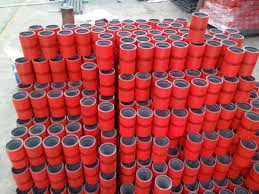- Afrikaans
- Albanian
- Amharic
- Arabic
- Armenian
- Azerbaijani
- Basque
- Belarusian
- Bengali
- Bosnian
- Bulgarian
- Catalan
- Cebuano
- Corsican
- Croatian
- Czech
- Danish
- Dutch
- English
- Esperanto
- Estonian
- Finnish
- French
- Frisian
- Galician
- Georgian
- German
- Greek
- Gujarati
- Haitian Creole
- hausa
- hawaiian
- Hebrew
- Hindi
- Miao
- Hungarian
- Icelandic
- igbo
- Indonesian
- irish
- Italian
- Japanese
- Javanese
- Kannada
- kazakh
- Khmer
- Rwandese
- Korean
- Kurdish
- Kyrgyz
- Lao
- Latin
- Latvian
- Lithuanian
- Luxembourgish
- Macedonian
- Malgashi
- Malay
- Malayalam
- Maltese
- Maori
- Marathi
- Mongolian
- Myanmar
- Nepali
- Norwegian
- Norwegian
- Occitan
- Pashto
- Persian
- Polish
- Portuguese
- Punjabi
- Romanian
- Russian
- Samoan
- Scottish Gaelic
- Serbian
- Sesotho
- Shona
- Sindhi
- Sinhala
- Slovak
- Slovenian
- Somali
- Spanish
- Sundanese
- Swahili
- Swedish
- Tagalog
- Tajik
- Tamil
- Tatar
- Telugu
- Thai
- Turkish
- Turkmen
- Ukrainian
- Urdu
- Uighur
- Uzbek
- Vietnamese
- Welsh
- Bantu
- Yiddish
- Yoruba
- Zulu
well casing coupling
The Importance of Well Casing Couplings in Oil and Gas Operations
In the oil and gas industry, the integrity and safety of drilling operations are paramount. One crucial component that ensures these operations run smoothly and efficiently is the well casing coupling. This specialized device plays a vital role in connecting segments of casing, which form the structural backbone of the borehole.
What is Well Casing?
Before delving into well casing couplings, it's essential to understand what well casing is. Well casing refers to the steel pipes that are inserted into a drilled oil or gas well. The primary purpose of casing is to stabilize the well, prevent collapse, and isolate fluids in different geological formations. This allows for safer and more efficient extraction of hydrocarbons.
The Role of Well Casing Couplings
Well casing couplings are mechanical fittings that join two sections of casing together, ensuring a secure connection. These couplings must withstand tremendous pressure and stress, given the harsh conditions encountered during drilling operations. They are available in various shapes and sizes, each designed for specific functions.
Types of Well Casing Couplings
There are several types of casing couplings, each with unique properties
1. External Couplings These are the most commonly used type of coupling, which fit over the ends of casing pipes to join them together. They provide a substantial amount of strength and are easy to install.
2. Internal Couplings Unlike external couplings, internal couplings fit inside the casing pipes. They require precise measuring and fitting but are useful in specific situations where external couplings may not be applicable.
3. Threaded Couplings This type features threaded ends that screw together, creating a tight seal. Threaded couplings are beneficial in environments where quick assembly and disassembly are required.
4. Welded Couplings In high-pressure applications, welded couplings offer enhanced durability and resistance to leaks. The welding process creates a strong bond that is essential in extreme conditions.
Material Considerations
well casing coupling

The materials used for well casing couplings are crucial in determining their effectiveness
. Couplings are typically manufactured from high-quality carbon steel or alloy steel, which can withstand corrosion, temperature fluctuations, and the mechanical stresses associated with drilling activities. The choice of material often depends on the specific demands of the drilling environment, including the composition of fluids being extracted and the geological formation being drilled.The Installation Process
Proper installation of well casing couplings is essential for ensuring the integrity of the well. The process typically involves several key steps
1. Cleaning the Ends Before coupling, the ends of the casing pipes must be cleaned to remove any debris or contaminants that could compromise the seal.
2. Alignment The casing pipes are aligned carefully to ensure an accurate fit. Misalignment can lead to weak connections and potential failures.
3. Securing the Coupling Depending on the type of coupling used, this step may involve tightening screws, welding, or simply slipping the coupling over the ends of the pipes.
4. Testing for Leaks After installation, the connections are often tested for leaks to ensure that they can withstand the high pressures encountered in drilling operations.
Challenges and Innovations
Despite their importance, well casing couplings face numerous challenges. These include the risk of corrosion, mechanical wear, and the potential for leaks. Innovations in material science and engineering have led to the development of corrosion-resistant coatings and designs that enhance the reliability of these connections.
Additionally, advances in monitoring technology, such as the use of sensors that detect pressure changes or structural integrity, have made it easier to preemptively identify and address potential issues with well casing couplings before they escalate into serious problems.
Conclusion
In summary, well casing couplings are fundamental components in the oil and gas drilling process, contributing significantly to the safety and efficiency of operations. Understanding their types, materials, and the challenges they face is essential for engineers and workers in the industry. As technology continues to evolve, ongoing advancements will likely lead to even more robust and reliable solutions, further ensuring the effective extraction of valuable resources while minimizing risks associated with drilling activities.
-
Tubing Pup Joints: Essential Components for Oil and Gas OperationsNewsJul.10,2025
-
Pup Joints: Essential Components for Reliable Drilling OperationsNewsJul.10,2025
-
Pipe Couplings: Connecting Your World EfficientlyNewsJul.10,2025
-
Mastering Oilfield Operations with Quality Tubing and CasingNewsJul.10,2025
-
High-Quality Casing Couplings for Every NeedNewsJul.10,2025
-
Boost Your Drilling Efficiency with Premium Crossover Tools & Seating NipplesNewsJul.10,2025







